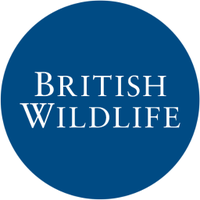
British Wildlife Mag
@britwildlife
British Wildlife: the magazine for the modern naturalist. Now published by @nhbsNews
ID: 971822822
https://www.britishwildlife.com/ 26-11-2012 11:52:54
2,2K Tweet
4,4K Takipçi
377 Takip Edilen

@britwildlife
British Wildlife: the magazine for the modern naturalist. Now published by @nhbsNews
ID: 971822822
https://www.britishwildlife.com/ 26-11-2012 11:52:54
2,2K Tweet
4,4K Takipçi
377 Takip Edilen